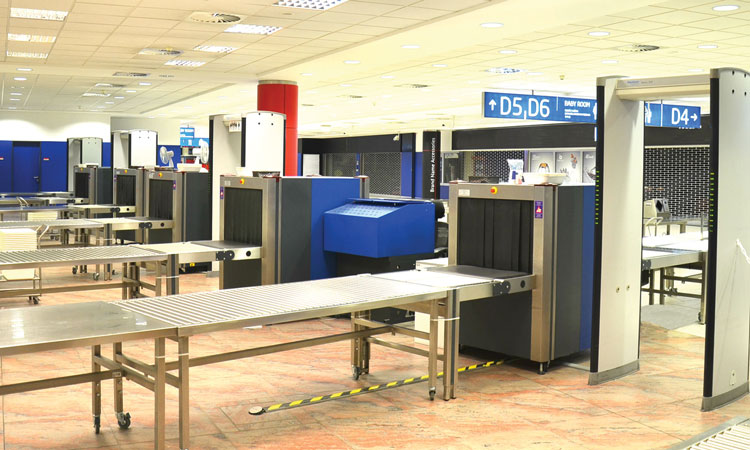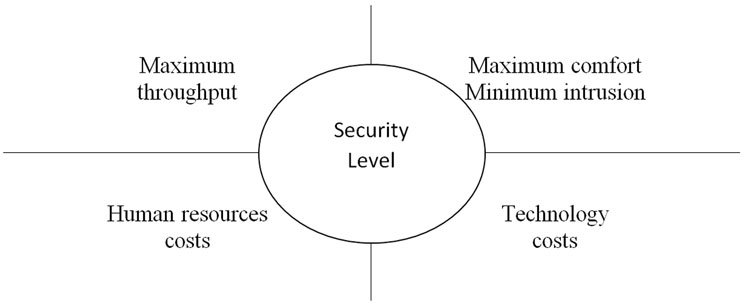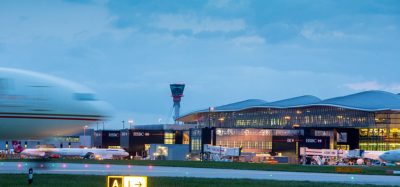Improving passenger screening at Václav Havel Airport Prague
Posted: 13 April 2015 | Marek Najman | No comments yet
Marek Najman, Security Training Manager at Václav Havel Airport Prague explains how it has modernised both in the technology it uses and in its approach to passenger processing in order to improve threat detection as well as the individual experience.


You’ve just landed at Václav Havel Airport Prague, a middle-sized airport in the heart of the Europe with more than 11 million of annual passenger volume. Responsibility for preventive security measures including passenger screening fully lies with the airport authority. Activities of the state security units are primarily focused on emergency response management, border control and other specialised activities. Assuming the constantly changing legislative environment within the EU, airports must constantly scrutinise the suitability of particular measures, procedural and technological solutions in order to ensure a sufficient level of security that meets an optimal level of cost. One of the most important elements influencing security operations at Václav Havel Airport Prague is the variation in traffic characterised by larger differences between regular traffic and peak hours.
The airport consists of four terminals. The south part of the airport comprises of Terminal 4, reserved for governmental flights, and Terminal 3 which is mainly for private flights. The north part, geographically separated by the runway system, includes Terminal 1 and 2 and provides commercial air services. The ratio of operations at both terminals is nearly equal. The older Terminal 1 (1995) is intended for passengers travelling out of the Schengen area. It was constructed when security was less of a priority among all airport processes and in terms of contemporary security provisions, its layout is not ideal for meeting operational preconditions.
As the terminal is built on a single level, it is impossible to separate departing and arriving passengers and therefore there is a need for decentralised security screening. This gate security screening mode leads to a requirement for a noticeably higher amount of human resources and security equipment. In spite of these shortcomings, the airport has found a satisfactory solution based on joining gates and parts of the pier lying next to each other together into semi-centralised screening points. This method doesn’t lead to fully centralised screening, nevertheless it achieves a much better level of necessary inputs and, above all, it provides passengers with more comfortable and faster screening.
Join us live: Shaping the Next Generation of Hold Baggage and Air Cargo Screening
Join us live for an insightful webinar on 11th December at 14:00 GMT, in collaboration with Smiths Detection, as we explore the strategic balance of operational efficiency, regulatory compliance, and sustainability in high-volume security environments.
This session offers a focused look into future-proofing your security strategy.
Key learning points
- Cost Reduction: Strategies to minimize bag travel time while simultaneously reducing operational costs.
- Regulatory Roadmap: Insights into the next wave of regulatory changes and their impact on future investment decisions.
- Sustainable Systems: Practical approaches to building sustainability into security systems and lowering the total cost of ownership (TCO).
- Scalable Solutions: Real-world examples of scalable systems supporting current airport growth and preparing for tomorrow.
Register now for expert insights, case studies, and actionable strategies on operational efficiency!
Terminal 2 is dedicated to Schengen Area flights. It is the youngest terminal at the airport, and is therefore much more flexible for small reconstructions and reshaping according to the latest security applications. There are two fully centralised screening points: one for departing passengers (14 lanes) and one for transferring passengers (four lanes). Although it is a modern terminal the main centralised screening point has to be continually adapted due to a year on year increase in local departing passengers.
During recent years, due to a gradual increase in security demands, Terminal 2 has become the main centralised screening point and as a consequence, has become less flexible for effective installation of the most modern technologies such as fully automated lanes or security scanners in combination with walk through metal detectors. Lanes have less room for passenger pre-check preparation as well as for repacking baggage. To make this limited space suitable for necessary fluency of the passenger flow, the airport has put in extra highly trained personnel to each lane to speed up the process by taking an individual approach to each passenger.
General overview on the concept of screening
The concept of screening points at Terminal 1 is based on a traditional layout. One lane is usually equipped with a walk through metal detector (WTMD) and conventional single view X-ray with re-check position. The hand search is used as a secondary screening method. Regular hand search doesn’t include usage of a hand held metal detector, which is used only as an additional measure in specific cases. A typical gate screening point consists of two fully equipped lanes. According to gate security conditions, the number of WTMDs must be equal to the number of X-rays. An effort to reduce the amount of WTMDs by using one detector per two X-ray machines was refused with regards to ensuring 100% on-time departure. The reason is that if there is any WTMD breakdown, there will be only one per two lanes, and with a substitution requiring calibration this can potentially result in long delays. Each gate is also equipped with a minimum of one liquid explosive detector for additional check of liquids and gels.
This is where the disadvantage of the decentralised model is exposed. Contrary to the centralised model it is impossible to share this kind of equipment among more lanes. This concept affects the deployment of personnel and its resources in the same way. During the dedicated flight dispatch there is a fluctuating workload. To minimise this effect, the airport takes advantage of a modern roster planning application that provides a more effective shift set up according to estimated traffic.
Security control operational dispatching is equipped alongside the regular communication equipment and airport information systems with internal CCTV that brings a self-contained overview of the situations at particular screening points, departure peers and check-in desks. Combination of these systems allows dispatching to react operatively on irregularities in traffic and solve any potential accumulation of passengers in advance by strengthening human resources. The latest improvement in security screening point operation management is a brand new real time module that is able to integrate current information about workload of available employees, embarking status, stand occupation, continuously updated arrival and departure times into one output using data from the airport CDM system.
The current design of the centralised screening point at Terminal 2 is also based on a traditional layout, and the 14 fully equipped lanes have been extended step by step to 14m length. 2013 brought additional provisions on shoe and sole hand searches carried out on randomly selected passengers. This was one of the most important factors that slowed down the total throughput, which in combination with unsatisfactory length of pre-check preparations resulted in bottlenecks.
A targeted survey showed that there were a lot of passengers detaining other passengers while preparing their bags on a pre-check track. A second finding was that the pre-check preparation largely depends on the type of passenger. During recent years all the lanes have been moved to a more oblique position to achieve more comfortable pre-check preparations. This new model was supported by more effective communication to passengers including our popular video spots and a team of highly trained security assistants helping each passenger with pre-check preparations. Boosting the input at the beginning of each lane consequently led to a need to increase the throughput at the end. The logical step was to make the repack part of the track larger and introduce the new recheck position separated from the repack track in order to speed up the process and ensure individual comfort for each passenger.
Regarding the security crew positions at checkpoints, the traditionally rooted dogma of three fully trained employees rotating at each lane was left behind. A new position of a security searcher carrying out purely hand searches of passengers and their baggage without operating the X-ray was put in place. A targeted group of such employees was focused on students. Tight specification of the job description allowed them to focus on better training in communication and soft skills to devote maximum attention to each passenger. Diversification of job positions also created an effective tool for coverage of peak times using three to four hour shifts.
Detailed view of the equipment
Pure security procedures usually start with access control points. Passenger access control is currently solved by visual inspection of travel documents in combination with 2D barcode boarding pass verification using hand held readers. During the upcoming season brand new automated gates will be installed. The concept of operation lies in the principle of matching 2D barcode data with flight schedules, other operational databases and the reservation systems.
Another planned role for this equipment is data collection not only for the purpose of statistics but also for serving as input data for the internal airport process modelling system and its exploration. The operational objective is the ability to monitor waiting times at security screening points and to reduce possible queueing. Another goal is the important notice to an air carrier about a passenger’s presence at the airport. This is specially aimed at Internet check-in passengers whose presence is never confirmed until the moment of boarding. The last but not least future role of these highly sophisticated automated gates is the ability to divide passengers into different groups subjected to different criteria. This goes hand in hand with the general assumption of penetration of differentiation combined with unpredictability within the scope of security screening.
Security control mainly operates conventional single view high definition X-ray equipment from two different manufacturers. Its operation varies not only in control concepts and some of the display features, but also in the way it displays certain types of materials, especially of organic origin. Differences in displaying are even more apparent in the overlay of materials. One type of X-ray prefers organic materials even in cases where the organic material is behind and the second type prefers upper inorganic material. This is why the training of screeners must be done at the highest level from the very first moment. Screeners have to practice material discrimination using both X-ray types one after another. The presence of multiple kinds of devices leads eventually to much better perception and professional abilities.
Highly sophisticated computer based training gives ample scope to compare the individual performance of each screener. Another way of measuring individual skills is in evaluation of the threat image projection (TIP) system, with TIP libraries managed by the airport and maintained from its own resources. Further development of X-ray equipment will consist primarily of acquisition of modern dual view equipment with automatic explosive detection. Operational tests of such equipment have proved to result in significant time savings and better display features that improve passenger flow and detection abilities.
The use of metal detectors in aviation security is one of the oldest screening methods. Even at Václav Havel Airport Prague, walk through detectors are still the basic building brick of the traditional screening point. Detection capabilities are comparable in different types of machine. What is crucial, however, is the ability to display the amount of detected metal and features that generate random alarms. According to the development of legislation in this area, the most anticipated development consists of software changes that might bring new features such as various individually adjustable random alarm generators.
Handheld detectors are mostly used as an additional detailed screening method. Routine use of handheld devices has, without exception, a major detrimental impact on the quality of hand searches. From personal experience using handheld devices in combination with hand search makes it tempting for screeners to breach the best practices and methodology as the ‘paddle’ works as an extended arm. As such, they are not used during regular hand searches any more. Standard hand search methodology was designed by the airport and aims on covering all desired areas with an emphasis on critical parts, all in the shortest possible time. The goal is to make the search less invasive while keeping the necessary level of detection.
Explosive trace detectors have also been used at the airport for tens of years. It has always been used as a complementary method of detection of cargo, goods or hold baggage. The advantage of equipment used by Václav Havel Airport Prague is the ability to operate in both modes. The latest piece of equipment operated by the airport is a pocket size device capable of analysis in less than 10 seconds. Due to its size and fast evaluation, it is easy to use even for mobile patrolling units. Deploying this device into security screening of employees has brought a great opportunity to perform unpredictable checks that have increased the level of security and brought positive feedback from employees at the same time. The future of the current version of this device lies in receiving ECAC CEP certification, nevertheless we expect to use such mobile and easy to use devices in future.
The newest element of screening is definitely in liquid, aerosol and gel detectors. Various types of devices working on various operational concepts offer a range of possible options for integration into our security procedures. In the first phase of their introduction the airport has opted to implement ‘B’ type detectors using multiple sensing technologies supplemented by an ‘A’ type device working on the principle of Raman spectroscopy. Other phases will require that we introduce ‘C’ type detectors that will eventually replace the previous generation the equipment. These new X-ray devices combine liquid inspections and automated explosive detection, and will definitely become the basic building blocks of airport security screening lanes.
Not all the airports within the EU have implemented security scanners into their concepts yet. Airports that have done so, have tried various positions – some in primary detection, others as a secondary right after the WTMD. Václav Havel Airport Prague operates one security scanner mainly for the purposes of testing, located in the airport lounge area. The results confirm that this is a less intrusive form of check that definitely makes screening more acceptable and comfortable.
Relying on devices: Finding the optimal solution
The process of passenger screening nowadays is rapidly changing and developing, but the price is constantly increasing. Despite this, passengers are still dissatisfied. To set up the optimal screening process it is necessary to find a suitable combination of fundamental factors (Figure 1), which influence each other while maintaining the necessary level of security.


Figure 1
One of the possible keys to an optimal solution is undoubtedly a further development of technologies and their affordability. Regarding that, there are a few essential questions: How far a technology affects the complex perception of screening by passengers? Do passengers really care about the methods of screening used on them? Do they care about the limits of technologies and the kind of screening point layout in place?
Passengers are usually interested in overall impression. They care about the way they were treated, about the way they were spoken to, about the time they were standing in a queue, how willingly the staff explained to them what to do, where to go, what to put off and how intrusive the inspection was. As a result, Václav Havel Airport Prague has developed specialised training for security staff that is focused on a communication, soft skills and dealing with passengers. The security screening point is indisputably the place where the overall impression is made. Employees always have to remember that teamwork is the key for quality, because only one wrong part in a whole chain might ruin the efforts of all the security staff.
The role of the airport is to find a solution that combines a maximum capacity throughput using highly sophisticated technologies, while reducing costs at the same time. After all, a major role in passengers screening is still the human factor. That’s what we realise at Václav Havel Airport Prague.
Biography
Marek Najman is Security Training Manager and Security Auditor at Václav Havel Airport Prague. His career began in the Ministry of Transportation of the Czech Republic in 2008 within the Department of Security Technologies. In 2009 he became National Security Auditor and National Security Training Auditor within the Department of Civil Aviation before moving to his current position in 2012. He holds master’s degrees in Economics and Security Management.
Join our free webinar: Transforming Airport Security – Innovation, Impact, and the Passenger Experience
The landscape of airport security is undergoing a profound transformation, driven by evolving threats, technology, and passenger expectations. This webinar focuses on how AtkinsRéalis has been transforming security processes at some of the world’s busiest airports with smarter, more adaptive solutions.
Date: 4 Nov | Time: 14:00 GMT
REGISTER NOW TO SECURE YOUR SPOT
Can’t attend live? No worries – register to receive the recording post-event.
Issue
Related topics
Airside operations, Passenger experience and seamless travel, Regulation and Legislation, Safety, Security, Terminal operations


















